Regenerative Farm & Tourism Venture - Eastern Free State
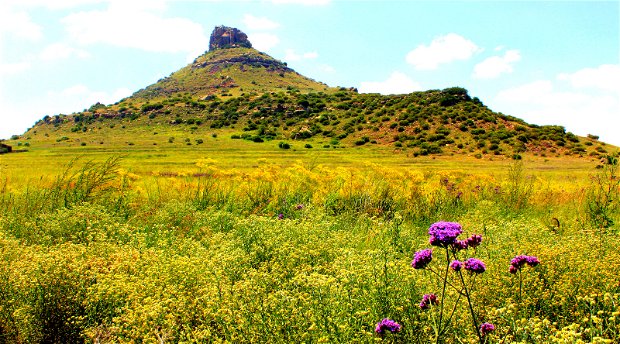
Spitskop – THEN
In 2002 when the present owners returned to this small farm they were aghast at the destruction – fields overgrazed – destructive tilling - chemical fertilizers – sprays and poisons had all but destroyed indigenous plants – natural pollinators.
• And so the healing began.
Spitskop - NOW
Step into the enchanting world of Spitskop, where 20 yeas of dedicated REWILDING has transformed a once neglected landscape into a thriving haven for nature and humans alike.

Over twenty years of dedicated REWILDING has transformed a once neglected landscape into a thriving haven for nature and humans alike. Amidst challenges, owners embarked on a journey of healing and restoration, which, over 2 decades, has revitalised the land, bringing back native plants, flourishing habitats and a renewed sense of vitality.

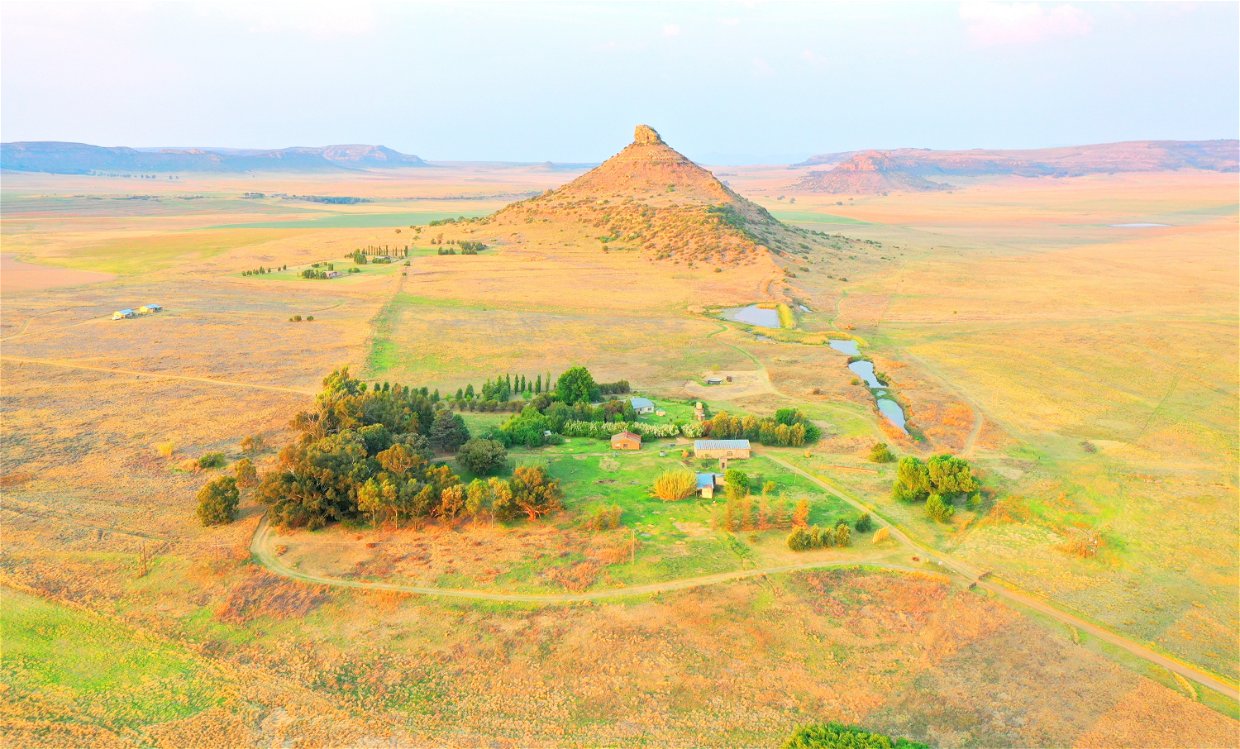
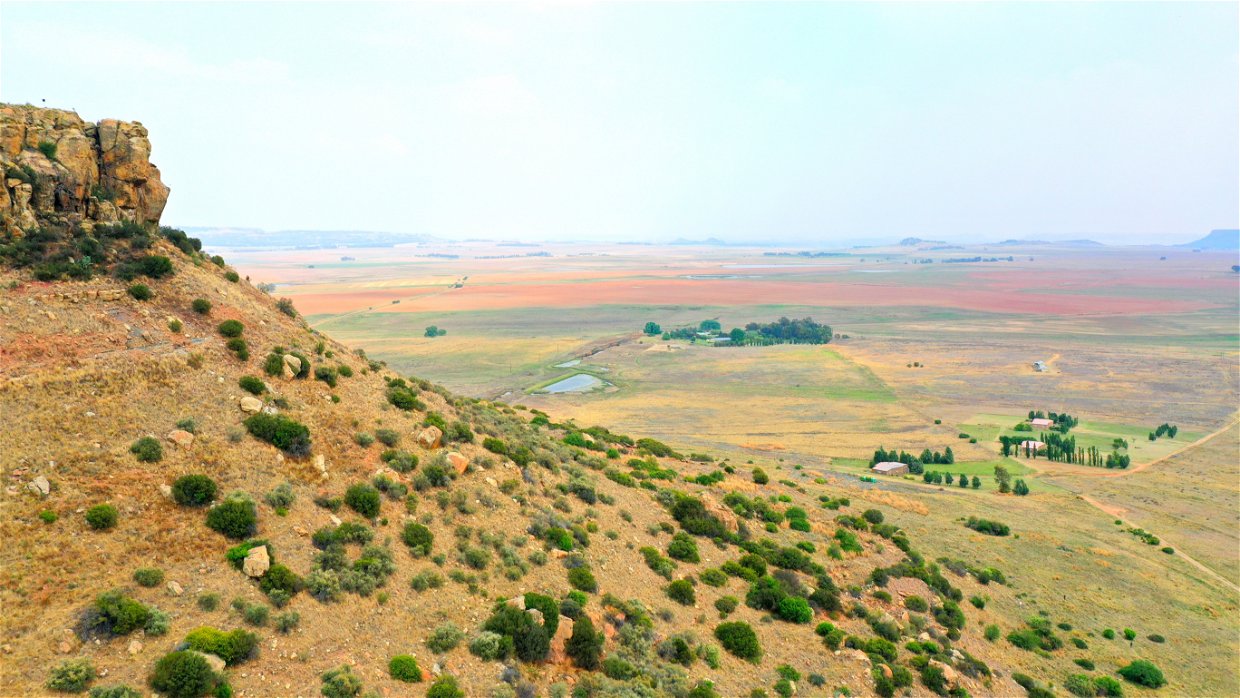
EXISTING INFRASTRUCTURE
The property, 163,3812 hectares of grassland & the "koppie"
- 3 x Family self-catering cottages (164sq meters & 175sq meters)
- 2 x luxury open-plan self-catering cottages (64sq meters)
- 1 x Sandstone Guest House (375sq meters) + 2 x freestanding sandstone bedrooms (34sq meters each)
- Garage for two cars — Electrified with two bedrooms & a bathroom at the rear.
- Seven staff rooms — Electrified.
- Steel framed Farm Store — Electrified (130sq meters)
- One borehole — 3.75kw submersible with extensive water pipe network and 5 x 5000-liter water tanks
- One borehole with lister pump
- One borehole lined.
- Roads and hiking trails
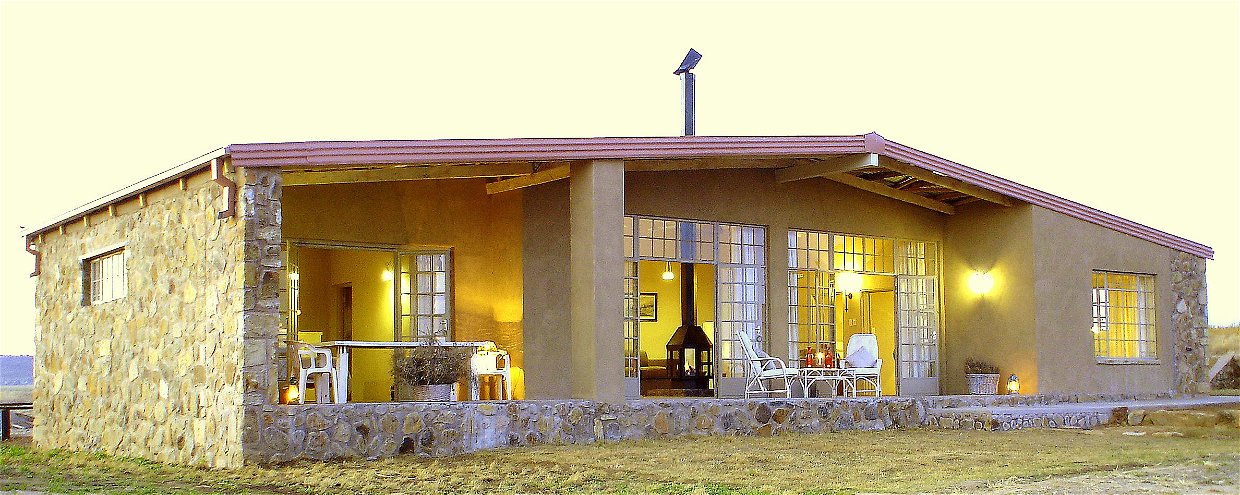
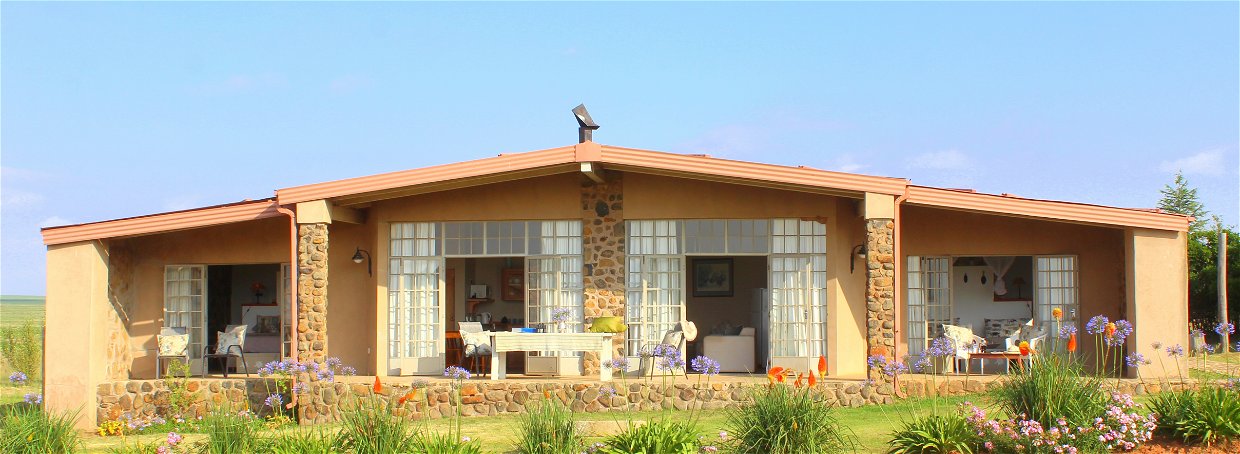
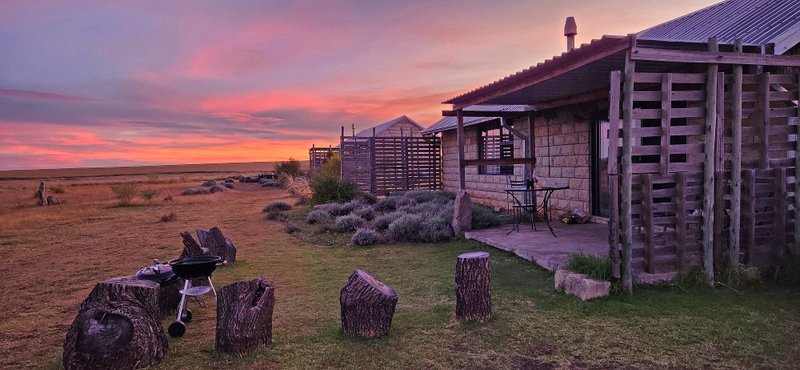
TOURISM : The central portion of the property makes up the tourism sector as per existing infrastructure, with some 66 hectares of Green Mountain Reserve plus the some 16.60 hectares of grassland around cottages. The introduction of a small herd of game – Blesbuck, Ribbok – would enhance the tourism sector hugely and especially for overseas guests who look to SA for wildlife /game experiences – production of organic venison.
Laid out are scenic mountain biking, hiking and walking trails, and the ~6km boundary perimeter is perfect for establishing circular routes.
Picnic and quiet spots are laid out in the mountain, where common duiker, rhebuck and serval make their homes. Night creatures such as porcupine, springhare, small spotted genet and aardvark have been caught on a Trail Camera where they live in the sanctuary that is Spitskop.
- With the abundance of sunshine, solar energy would be a natural progression.
AGRICULTURE: Making up some 50% of the property @ 81.66 hectares - wilded and restored for 20 years. Thus organic status can be immediately applied for – the arable ground is ideal for growing organic vegetables and fruit for both the flourishing organic market as well as use in own kitchens and dining for paying guest.
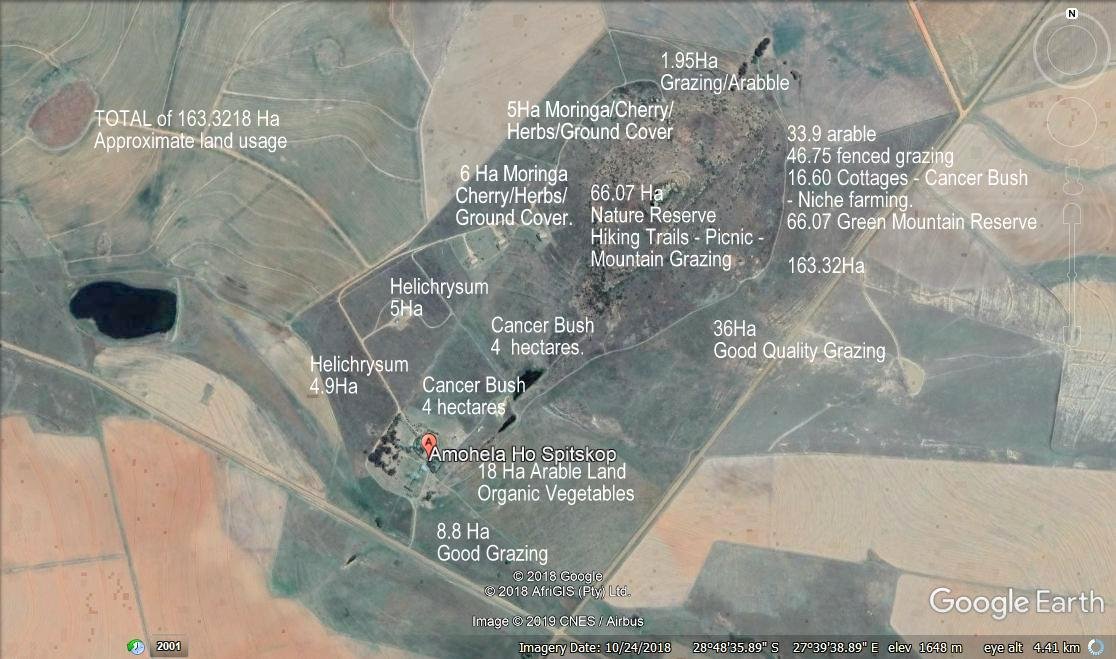
Areas where grass seeds have been left to fall now offer good grazing – this lends itself to the introduction of a small flock of organic sheep – there is ample space for the production of free range organically produced chickens and eggs.
There are large tracks perfect for the growing of herbs such as sutherlandia frutescens – whilst helichrysum, artemisia afra and others have been wild seeded and now grow prolifically on the property.
In 2023 a satellite carbon potential estimate -30cm across the project area was excellent and indicated that land management of 60cm showed huge potential. Available upon request. Mpetsane Conservation Estate shareholders have had preliminary meetings and it remains simply for Purchaser to partner with the local Carbon Trading Company, in order to start earning from Carbon Credits on an annual basis.
The WILDING - The RETURN of natural predators and rare and beautiful creatures such as aardvark to the Sanctuary that is Mpetsane - are testament to the healing of this extraordinarily beautiful property - Trail Camera pictures showing an entrancing world of special creatures that now inhabit this very special place.
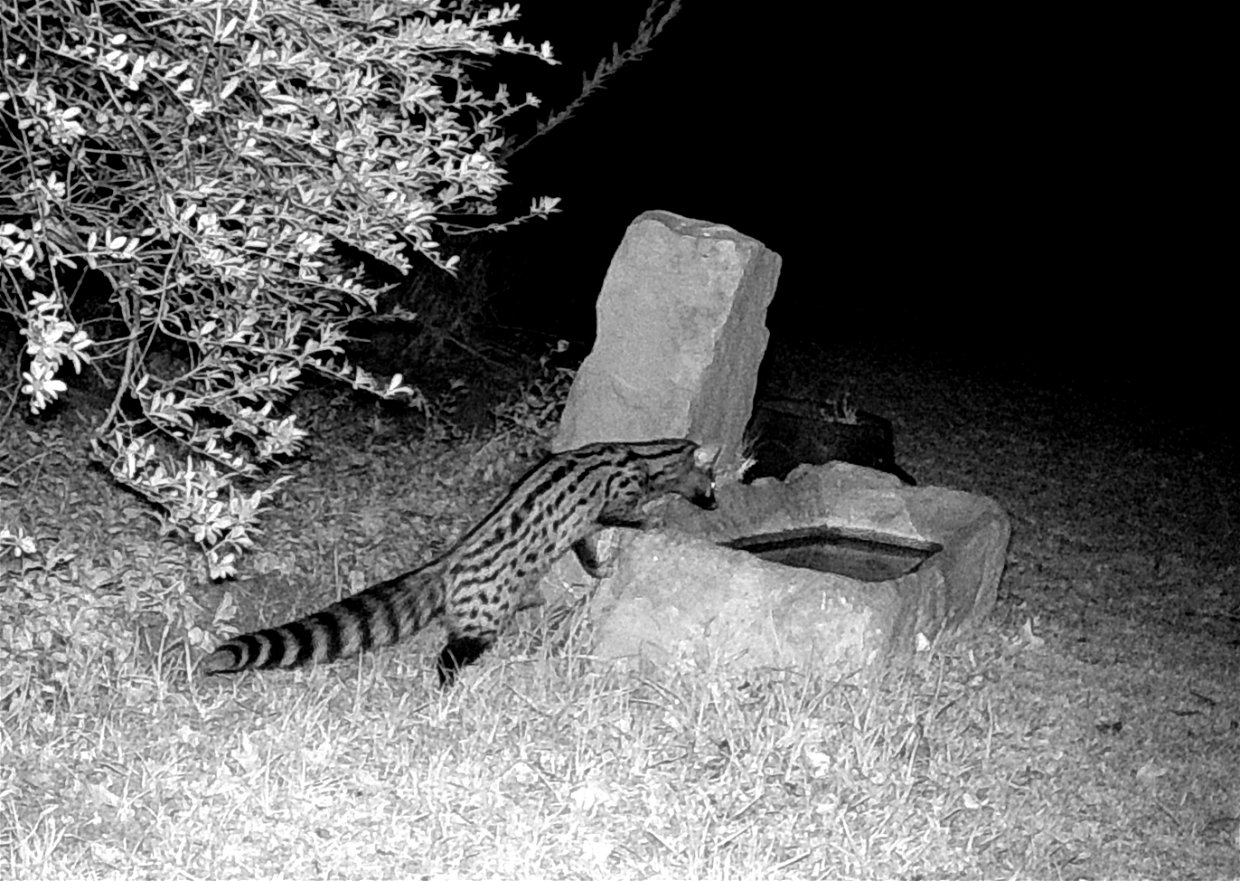
Genetta genetta
The common genet is solitary. Adults are nocturnal and crepuscular - their highest levels of activity following sunset and just prior to sunrise. They rest during the day in hollow trees or among thickets, and frequently use the same resting sites. Genets utter a click as a threat. The clicks, or, in younger individuals, growls, are used to indicate aggression. It has a varied diet comprising small mammals, lizards, birds, bird eggs, amphibians, centipedes, scorpions, insects and fruit.
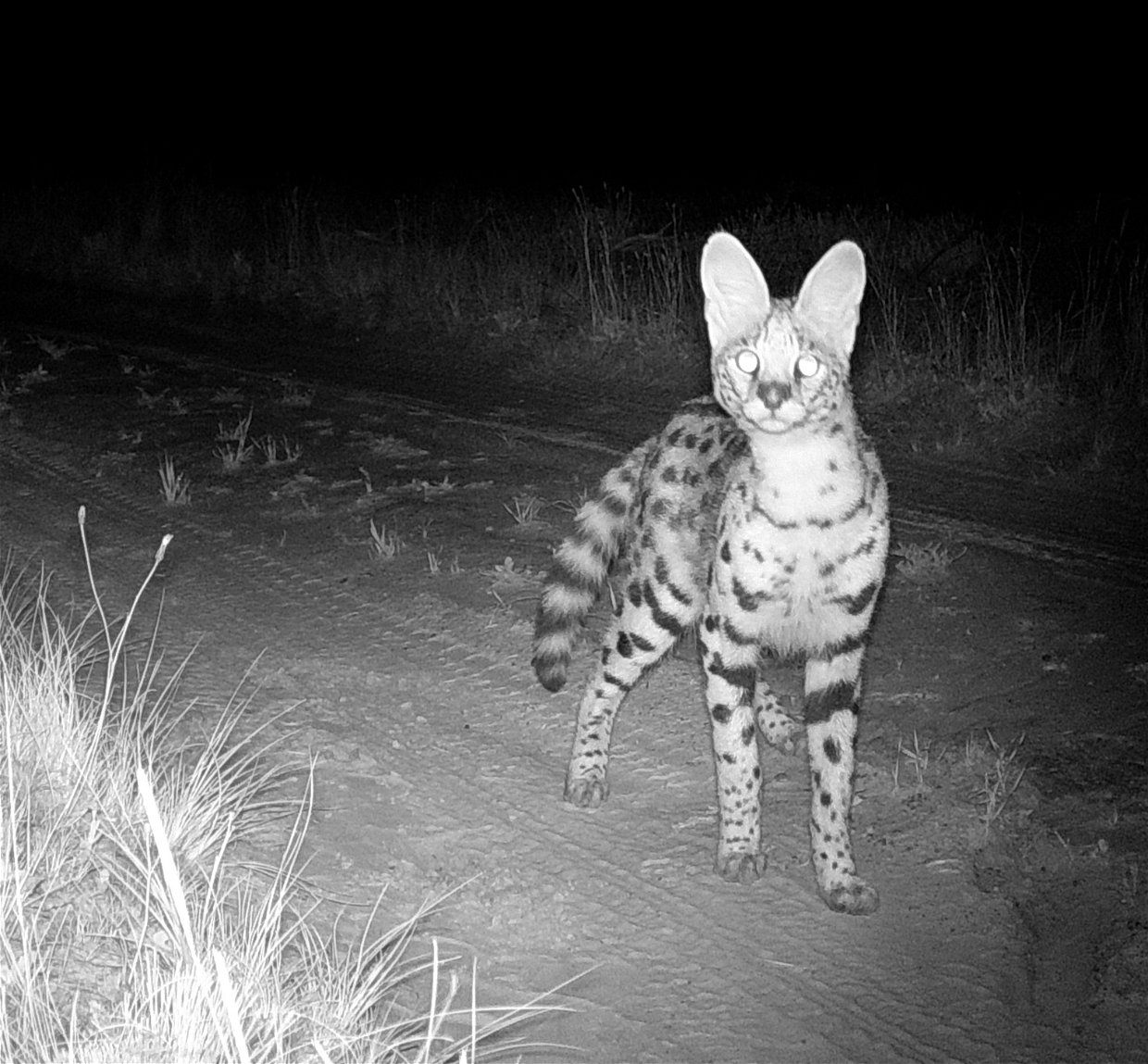
The serval (Leptailurus Serval) is a wild cat native to Africa. This magnificent cat is listed as “Near Threatened” by the IUCN. Thus Spitskop is a sanctuary where this magnificent cat is protected – and is seen regularly during daylight and at night hunting in the grasslands where it preys on rodents, small birds, insects, reptiles – thus a hugely important part of the natural pest control on Spitskop – where no poisons or rodenticides have been used for some 22 years in the REWILDING program.

The aardvark is nocturnal, solitary - & feeds almost exclusively on ants and termites. Due to their stringent diet requirements, they require a large range to survive - when a concentration of ants or termites is detected, the aardvark digs into it with its powerful front legs and takes up an astonishing number of insects with its long, sticky tongue. Aside from digging out ants and termites, the aardvark also excavates burrows in which to live. Temporary sites are scattered around the home range and are used as refuges, while the main burrows can be deep and extensive, have several entrances and can be as long as 13 metres. The aardvark periodically moves on and makes a new burrow – the old burrows are an important part of the African wildlife scene - as they are vacated, they are inhabited by smaller animals like ant eating chats, warthogs, porcupines, hares, mongooses, and lizards.

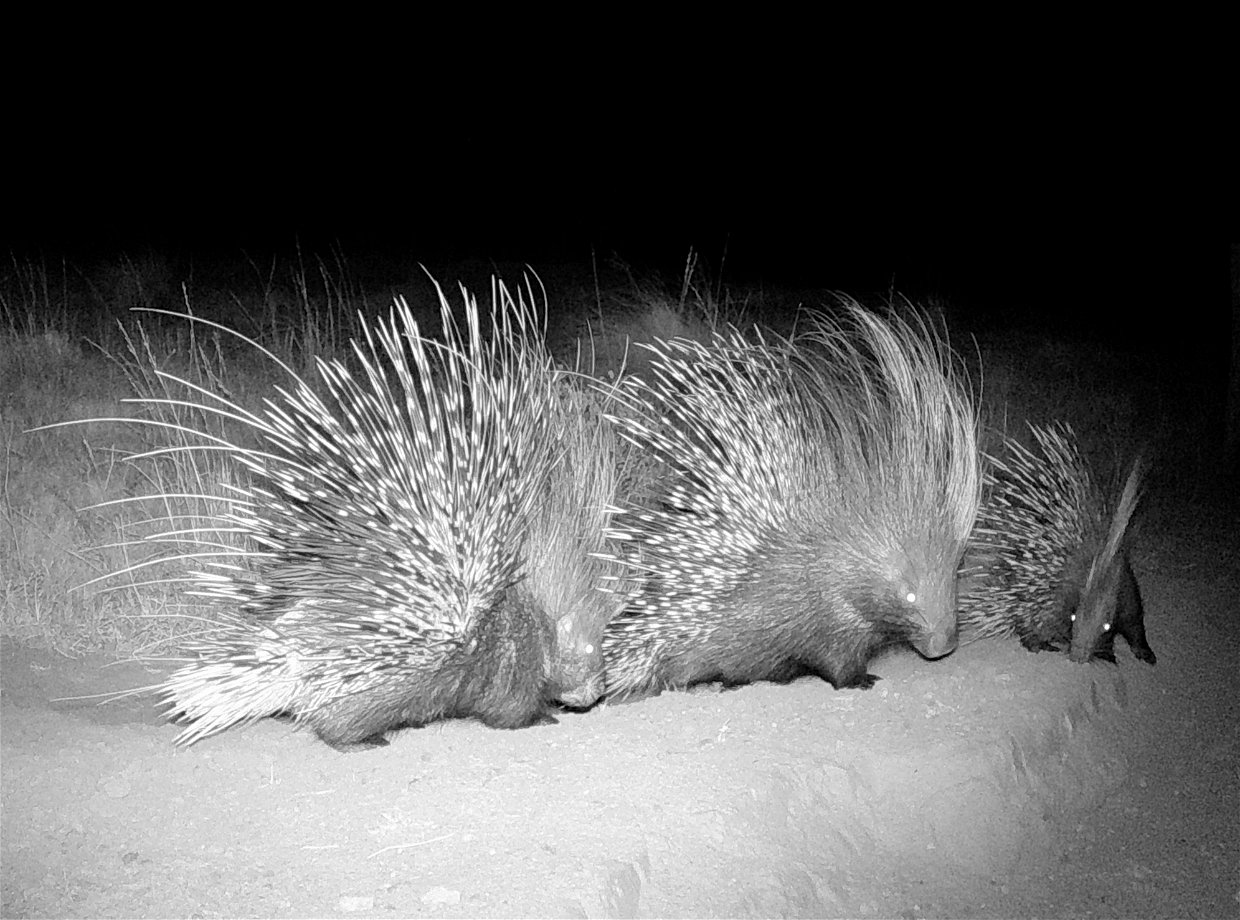
Cape porcupines, also known as Old World porcupines, are the largest rodents from the species Hystrix africaeaustralis and are native to southern Africa. They are nocturnal and forage at night). The porcupine has spines and stout quills for self-defence - the tail bears a rattle of hollow rattle quills, they communicate warning signs through stamping feet, raising quills and shaking the rattle quills on their tails. Their day-time shelter includes rock crevices, caves and abandoned burrows or other types of holes, which they have excavated or modified to their own requirements.We would be poorer without these gentle herbivorous creatures - crucial members of a healthy ecosystem - they are considered engineers of ecosystems of their foraging habitats as their digging opens up soil surfaces, which then allows water to seep into the ground, increasing the opportunity for germination of diverse annual plants, shrubs and grasses.
A business called WildFields Apothecary has been started where indigenous herbs are wild harvested and used to make a range of healing and soothing medicinal products with the potential to grow and expand exponentially.
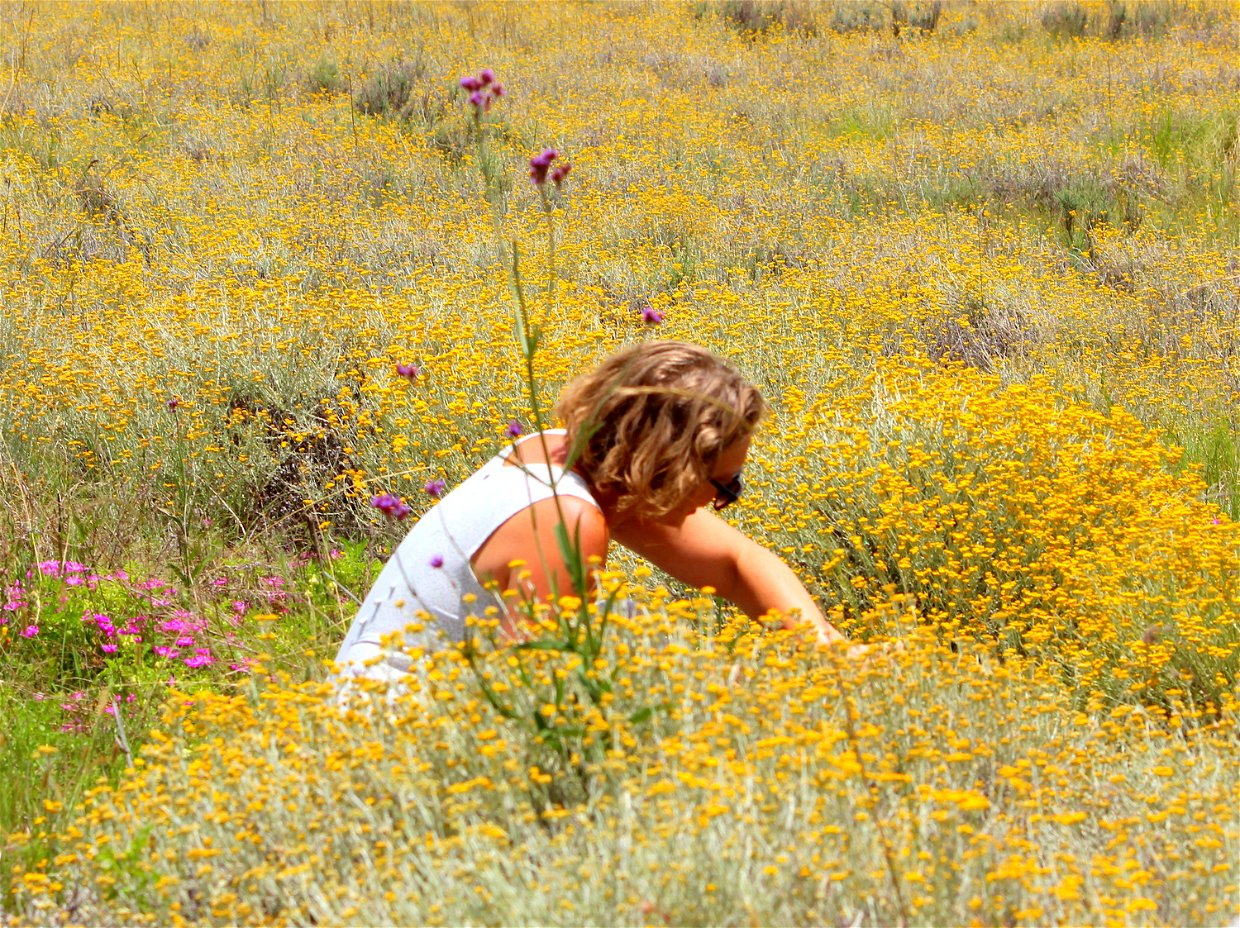
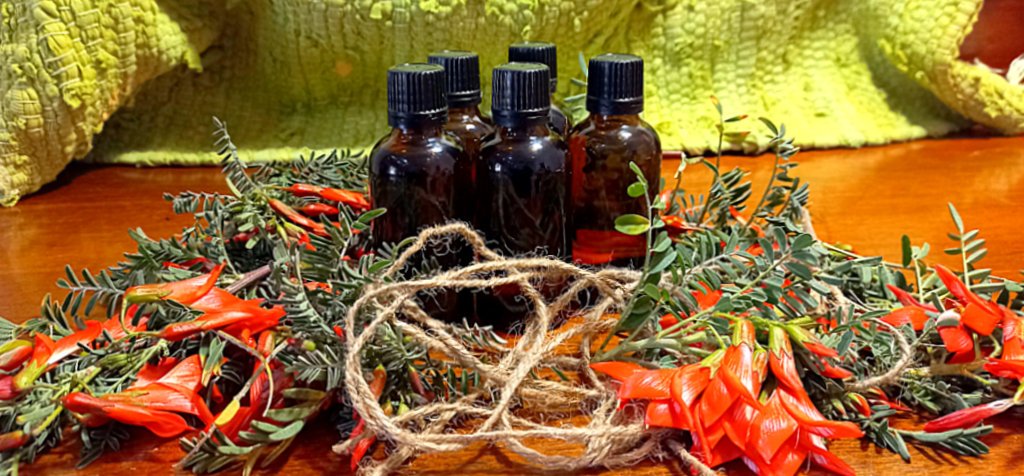
Following an intensive four-year-long application process with the Department of Agriculture, Land Reform & Rural Development, this exceptional property provides opportunities for the Tourism Sector in the development of a resort – with Change of Use Approvals already received from both the Free State and National Governments Offices.
10 housing units with options for two, three, and four bedrooms
A reception & restaurant / clubhouse
A lodge and wellness centre with eight free-standing luxury bedrooms
A wedding & conference centre
5 Freehold stands
Development Approvals are available should these be required for perusal.
- Also available upon request to verified interested parties: A detailed website encompassing all the above and a Business Plan expounding the full potential of the property.
- Owners wishing to retire property for sale
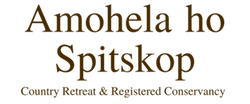


Share This Post